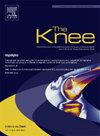接受膝关节软骨损伤治疗的患者的康复轨迹:一项系统回顾和荟萃分析
IF 2
4区 医学
Q3 ORTHOPEDICS
引用次数: 0
摘要
对恢复轨迹的了解有助于解释研究,管理患者的期望和计划未来的试验。本综述的目的是总结接受全层膝关节软骨缺损主要治疗方法的参与者的恢复轨迹:微骨折、支架修复、细胞扩增治疗或非手术治疗。方法检索截止到2024年4月的Medline、Embase、Web of Science和Cochrane Central Register of Controlled trials。主要结局指标是国际膝关节文献中心(IKDC)随时间的评分。计算具有95%置信区间(CI)的标准化平均变化(SMC)来评估治疗反应。结果共纳入46项研究。没有非手术研究。所有参与者的IKDC评分均较基线有所改善。所有组的合并SMC评分为:3个月时0.67 (95% CI−0.01 ~ 1.34),6个月时1.39 (95% CI 0.84 ~ 1.93), 12个月时1.85 (95% CI 1.40 ~ 2.30), 24个月时1.99 (95% CI 1.55 ~ 2.42), 36个月时2.27 (95% CI 1.15 ~ 3.40), 60个月时2.31 (95% CI 1.67 ~ 2.95)。接受每项手术的参与者在24个月时的IKDC评分达到平台期。微骨折和细胞扩增治疗的评分维持在60个月。没有超过36个月的支架修复数据。结论:从基线到稳定前24个月,所有组的IKDC评分均有改善。对于接受微骨折和细胞扩增治疗的患者,这一数据维持在60个月。基于支架的修复需要更多的长期数据。本文章由计算机程序翻译,如有差异,请以英文原文为准。
The recovery trajectory of people undergoing treatment for knee articular cartilage damage: A systematic review and meta-analysis
Background
Knowledge of recovery trajectories helps interpret studies, manage patient expectations and plan future trials. The purpose of this review was to summarise the recovery trajectory of participants undergoing the main treatments of full-thickness knee articular cartilage defects: microfracture, scaffold-based repair, cell expansion therapy or non-operative treatment.
Methods
The search included Medline, Embase, Web of Science and the Cochrane Central Register of Controlled trials until April 2024. The primary outcome measure was International Knee Documentation Centre (IKDC) scores over time. Standardised mean change (SMC) with 95% confidence intervals (CI) was calculated to assess treatment response.
Results
46 studies were included. There were no non-operative studies. All participants demonstrated an improvement in IKDC scores from baseline. Pooled SMC scores for all arms were: 0.67 (95% CI −0.01 to 1.34) at 3 months, 1.39 (95% CI 0.84–1.93) at 6 months, 1.85 (95% CI 1.40–2.30) at 12 months, 1.99 (95% CI 1.55–2.42) at 24 months, 2.27 (95% CI 1.15–3.40) at 36 months, and 2.31 (95% CI 1.67–2.95) at 60 months. Participants undergoing each procedure demonstrated a plateau in IKDC scores at 24 months. Scores were maintained at 60 months for microfracture and cell expansion therapy. No data existed beyond 36 months for scaffold-based repair.
Conclusion
All arms showed an improvement in IKDC scores from baseline up until 24 months before plateauing. This was maintained at 60 months for those undergoing microfracture and cell expansion therapy. More long-term data are needed for scaffold-based repair.
求助全文
通过发布文献求助,成功后即可免费获取论文全文。
去求助
来源期刊

Knee
医学-外科
CiteScore
3.80
自引率
5.30%
发文量
171
审稿时长
6 months
期刊介绍:
The Knee is an international journal publishing studies on the clinical treatment and fundamental biomechanical characteristics of this joint. The aim of the journal is to provide a vehicle relevant to surgeons, biomedical engineers, imaging specialists, materials scientists, rehabilitation personnel and all those with an interest in the knee.
The topics covered include, but are not limited to:
• Anatomy, physiology, morphology and biochemistry;
• Biomechanical studies;
• Advances in the development of prosthetic, orthotic and augmentation devices;
• Imaging and diagnostic techniques;
• Pathology;
• Trauma;
• Surgery;
• Rehabilitation.
 求助内容:
求助内容: 应助结果提醒方式:
应助结果提醒方式:


